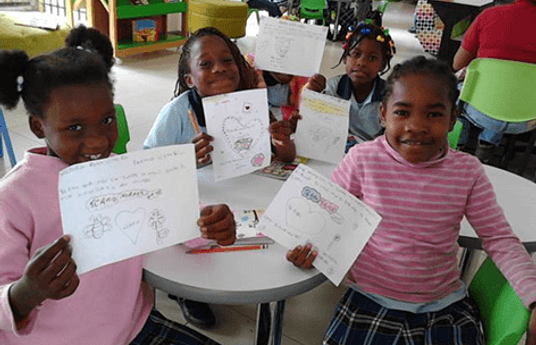The literacy problem is complex:
- It is estimated that 15% of the global population cannot read in any language
- Countries like India with massive numbers of young people need to ensure interventions that are deployable at scale, are impactful and economically efficient
- The public education system must be leveraged – typically has the largest footprint and enables direct partnership with education policy makers & administrators
- Transformation of large-scale public systems inevitably require private sector engagement. A case in point is Telecom and the massive scale change in many countries catalyzed by Public Private Partnerships
RightToRead has followed a journey of demonstration through execution:
- Initial Proof of Concept by engaging with a credible non-profit working with government/ public schools. This phase was self-funded by EnglishHelper
- Enhancing the pilot footprint to include other stakeholders for adding visibility and credibility. This was phase was co-funded by EnglishHelper and CSR (Corporate Social Responsibility).
- Large scale expansion in partnership with reputed development agency (USAID). This phase covered 5000 schools/ 1 million students and was co-funded by EnglishHelper and USAID.
- Massive scale growth to reach 100,000 schools and 20 million students. This phase is underway and is being funded by multiple stakeholders including government from public education/ social welfare budgets.
The growth of the program has been operationally staged as follows:
- The initial pilots were characterized by significant ‘manual’ activity e.g. physical shipment and installation of software, school visits and class-room observations of all schools covered by the program. Assessments were conducted leveraging in-house know-how and resources
- The subsequent large-scale expansion was supported by a hybrid process of reporting using IVR to capture the voices from the field. Direct engagements with schools was mainly over telephone with school visits undertaken for almost 50% of the population covered by the program
- Presently, RightToRead has been ‘virtualised’. The software is downloaded from the cloud. Once, installed it can be operated offline (without being connected to the internet). Whenever the host device connects to the internet, the software remits learning data to the EnglishHelper cloud hosted Learning Management System. This information in turn, triggers a host of actions including notifications/ text messages/ emails to teachers and school administrators.
- EnglishHelper, in partnership with independent assessment agencies, has developed a technology enabled model for evaluating progress of students. This refers (for each student) to a baseline (at the commencement of the program) and also provides a reference of students proficiency to a global standard (Common European Framework -CEFR) that enables comparison across grades, schools and locations.
RightToRead has been effective because it ensures the following key tenets of change:
- The software supports the reading of the prescribed English textbook. There is evidence that teachers are reluctant to engage with programs that add to syllabus goals. In addition, education administrators easily accept the program since it is in alignment with curriculum.
- The program is undertaken by the existing teachers during normal class periods. In other words, the teacher is still the leader of the classroom and does not have to undertake the program outside the normal class timetable.
- The program benefits teachers and students. Teachers find it physically easier (the teacher is not required to read the textbook aloud) and student engagement enhances teacher effectiveness while improving learning outcomes.
- The program adapts to local requirements e.g the voice used is as per accents accepted locally, reads local textbooks, supports local vernacular word translation.
In summary, RightToRead is a program that is focused on large scale, speedy and affordable implementation of a technology enabled reading program in public (government) schools. Since its launch in 2013, the program has evolved technologically and has gained credibility because of engagement of multiple stakeholders and independently evaluated results. In 2020, almost 10% of India’s public schools will be covered by the program. RightToRead is a ‘without borders’ initiative and has expanded to other locations beyond India. The program has enabled EnglishHelper achieve ‘double bottom line’ objectives i.e. massive scale social impact by creating a sustainable revenue generating model.



